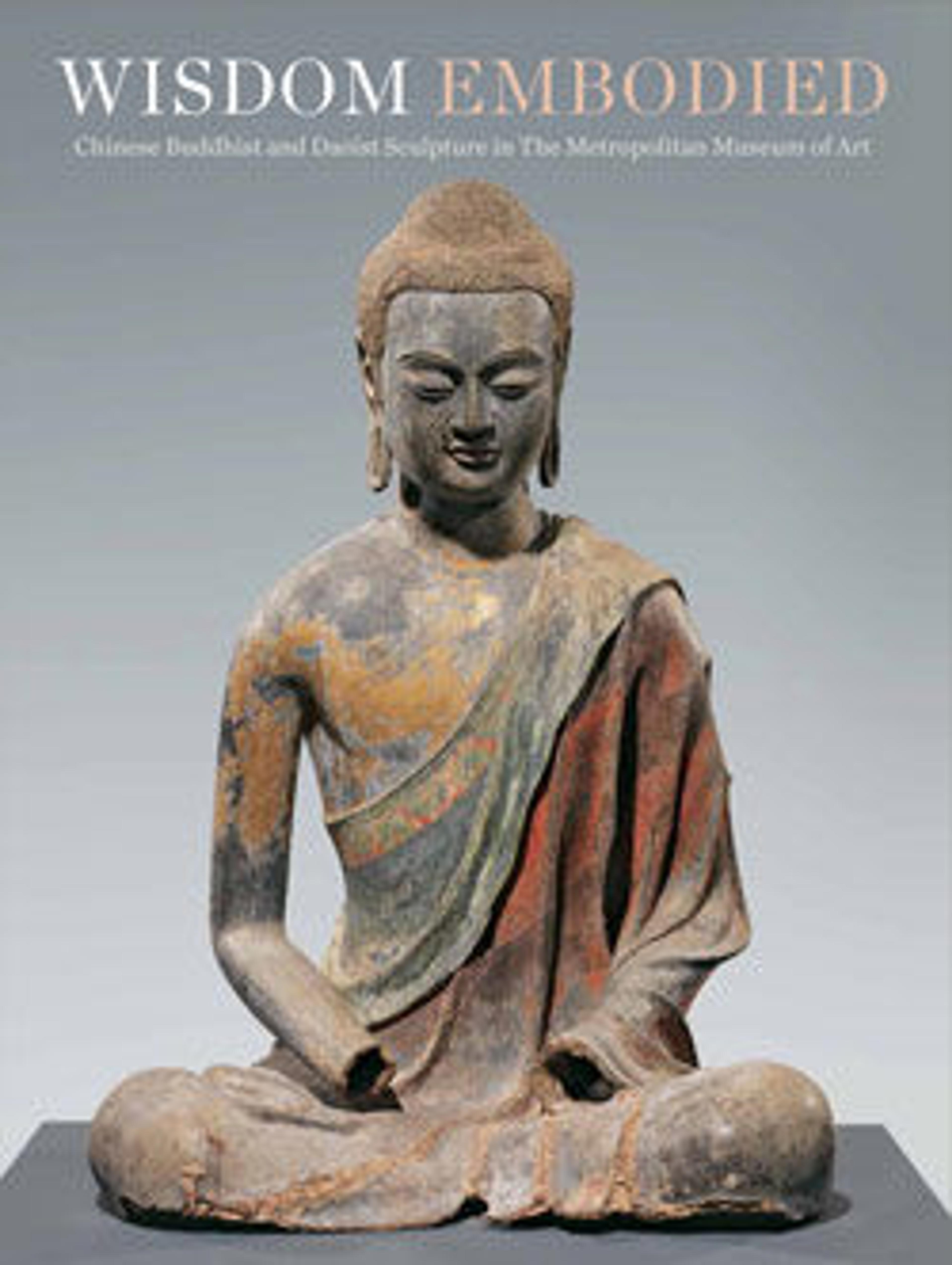Bodhisattva (Maitreya) with crossed ankles
This statue is most likely the Bodhisattva Maitreya. The closest examples are the Maitreya statues in Caves 5 and 25 (?) at Yungang, Shanxi Province. An early example is the Maitreya in Cave 275 at Dunhuang, which dates to early fifth century. All these statues share the same attributes, a seated posture with crossed legs, a crown with a Buddha image, and the right hand held upright with the palm facing forward in a gesture of allaying fears (abhaya mudra).
The representation of the Bodhisattva Avalokiteshvara (Guanyin) in Chinese Buddhist art first appeared in the late fourth century. By the late sixth century, it had assumed its standard image, characterized by the water flask and lotus stem, or willow branch, in his hand, and sometimes an image of the Buddha on his crown, which, at Yungang, was on the crown of Maitreya instead.
At an early stage of its development, Avalokiteshvara was often depicted as an attendant of Maitreya, as is seen in the Maitreya mural at Bingling Temple in Tianshui, Gansu, which dates to the early fifth century. It was not represented by itself until the late sixth century, when the worship of Avalokiteshvara gradually gained popularity.
More investigation is needed to confirm Cave 25 to be the original locus, as proposed on the catalogue card. In their seminal work on Yungang, Sekino and Tokiwa list 20 caves that range from late fourth to late fifth or early sixth century. They didn’t mention Cave 25, which is little recorded in Chinese sources.
The representation of the Bodhisattva Avalokiteshvara (Guanyin) in Chinese Buddhist art first appeared in the late fourth century. By the late sixth century, it had assumed its standard image, characterized by the water flask and lotus stem, or willow branch, in his hand, and sometimes an image of the Buddha on his crown, which, at Yungang, was on the crown of Maitreya instead.
At an early stage of its development, Avalokiteshvara was often depicted as an attendant of Maitreya, as is seen in the Maitreya mural at Bingling Temple in Tianshui, Gansu, which dates to the early fifth century. It was not represented by itself until the late sixth century, when the worship of Avalokiteshvara gradually gained popularity.
More investigation is needed to confirm Cave 25 to be the original locus, as proposed on the catalogue card. In their seminal work on Yungang, Sekino and Tokiwa list 20 caves that range from late fourth to late fifth or early sixth century. They didn’t mention Cave 25, which is little recorded in Chinese sources.
Artwork Details
- 北魏 彩繪石雕交腳菩薩像 (彌勒)
- Title:Bodhisattva (Maitreya) with crossed ankles
- Period:Northern Wei dynasty (386–534)
- Date:ca. 470–80
- Culture:China
- Medium:Sandstone with traces of pigment
- Dimensions:H. 57 1/2 in. (146.1 cm)
- Classification:Sculpture
- Credit Line:Rogers Fund, 1922
- Object Number:22.134
- Curatorial Department: Asian Art
More Artwork
Research Resources
The Met provides unparalleled resources for research and welcomes an international community of students and scholars. The Met's Open Access API is where creators and researchers can connect to the The Met collection. Open Access data and public domain images are available for unrestricted commercial and noncommercial use without permission or fee.
To request images under copyright and other restrictions, please use this Image Request form.
Feedback
We continue to research and examine historical and cultural context for objects in The Met collection. If you have comments or questions about this object record, please contact us using the form below. The Museum looks forward to receiving your comments.
